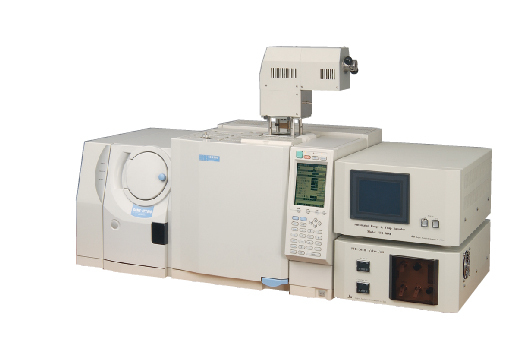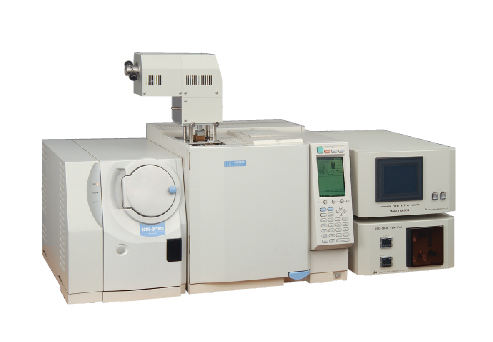JTD505MIII - Manual model

JTD-505MIII - Manual model

Outline
JTD-505M III is a manual model of Thermal Desorption Purge & Trap system to analyze one by one sample at a time.
It is possible to upgrade to the automated model later.
Other specifications are the same as JTD-505 III.
Feature
Sensitive analysis of samples from low to high boiling compounds.
Instant heating by curie point method.
Large capacity of PAT to trap greater volume of VOC samples at a time.
Large capacity of PAT enables sensitive analysis of outgas directly from small electronic parts, palletized solids etc. without pretreatment steps.
Two steps split can control analysis sensitivity depends on gas volume.
Analytical conditions can be stored into method files to reproduce analysis.
Compatible to all major GC models



Outline
JTD-505M III is a manual model of Thermal Desorption Purge & Trap system to analyze one by one sample at a time.
It is possible to upgrade to the automated model later.
Other specifications are the same as JTD-505 III.
Feature
Sensitive analysis of samples from low to high boiling compounds.
Instant heating by curie point method.
Large capacity of PAT to trap greater volume of VOC samples at a time.
Large capacity of PAT enables sensitive analysis of outgas directly from small electronic parts, palletized solids etc. without pretreatment steps.
Two steps split can control analysis sensitivity depends on gas volume.
Analytical conditions can be stored into method files to reproduce analysis.
Compatible to all major GC models


Specifications

Specifications

|
|
JTD-505Ⅲ
|
JTD-505MⅢ |
| Device unit | ||
| PAT thermal desorption | 0°C to 350°C (Cooling by LN2, Heating by resistance heating) *1 | |
| Transfer line | Ambient plus 10°C to 350°C (Heating by resistance heating) Metal capillary tube |
|
| SAT thermal desorption | Heating by curie point method (standard 280°C) | |
| SAT | Quartz glass packed with Tenax TA and pyrofoil 280 | |
| SAT cooling unit | minus 100°C to ambient (Cooling by LN2) | |
| SAT oven unit | Ambient plus 10°C to 230°C (Heating by resistance heating) | |
| Needle | Ambient plus 10°C to 300°C (Heating by resistance heating) | |
| GC connection | Direct connection to capillary column or injector | |
| Dimension/ Weight | 255(W) x 210(H) x 105(D) mm / 3Kg | |
| Loader | ||
| PAT rack | 15 tubes + 1 tube at home position for position calibration and blank test |
- |
| Carrying mechanism | Motor drive | - |
| PAT induction air plunger | Compressed air > 0.5MPa | - |
| Dimension/ Weight | 670(W) x 200(H) x 760(D) mm /14.3Kg | - |
| Controller | ||
| Touch panel screen | Set up temperature control, flow rate, valve control, etc | |
| Dimension/ Weight | 350(W) x 220(H) x 500(D) mm / 14.3Kg | |
| Power supply | AC100V 50/60Hz 15A | |
| Flow controller | ||
| RF power unit | 600kHz, 48W | |
| Contents | Split valve and built-in pressure controller | |
| Dimension/weight | 350(W) x 180(H) x 500(D) mm / 15.2Kg | |
| Liquid nitrogen dewar vessel and siphon | ||
| Liquid nitrogen dewar vessel | Internal volume 50 liter | Internal volume 20 liter |
| Dimension/ Weight | 460(OD) x 930(H) mm / 24.8Kg | 390(OD) x 650(H) mm / 9.2Kg |
| Siphon | 1000mm long, with solenoid valve | 800mm long, with solenoid valve |
| Overheat prevention unit (Option) *2 | ||
| Temp. sensor | 4 sensors | |
| Power supply | 15A Sensitivity current 30mA Emergency stop button is installed | |
| Dimension/ Weight | 350(W) x 170(H) x 500(D) mm / 8Kg | |
*1 For normal operation, it usually set at 60°C or higher. Between 0°C to 60°C is possible to set too, however, it cannot control the temperature precisely and it could fluctuate. Sampling in a cooler environment than ambient is also not recommended, considering the wait time on the sample rack.
*2 In case of thermal runaway in the heating units, the optional overheat prevention unit can turn off the main power supply. JTD-505 III has maximum temperature control software installed as standard specification. This option is for additional prevention.
| JTD-505Ⅲ | JTD-505MⅢ | |
| Device unit | ||
| PAT thermal desorption | 0°C to 350°C (Cooling by LN2, Heating by resistance heating) *1 | |
| Transfer line | Ambient plus 10°C to 350°C (Heating by resistance heating) Metal capillary tube |
|
| SAT thermal desorption | Heating by curie point method (standard 280°C) | |
| SAT | Quartz glass packed with Tenax TA and pyrofoil 280 | |
| SAT cooling unit | minus 100°C to ambient (Cooling by LN2) | |
| SAT oven unit | Ambient plus 10°C to 230°C (Heating by resistance heating) | |
| Needle | Ambient plus 10°C to 300°C (Heating by resistance heating) | |
| GC connection | Direct connection to capillary column or injector | |
| Dimensions, Weight | 255(W) x 210(H) x 105(D) mm, 3 Kg | |
| Loader | ||
| PAT rack | 15 tubes + 1 tube at home position for position calibration and blank test |
- |
| Carrying mechanism | Motor drive | - |
| PAT induction air plunger | Compressed air > 0.5 MPa | - |
| Dimensions, Weight | 670(W) x 200(H) x 760(D) mm, 14.3 Kg | - |
| Controller | ||
| Touch panel screen | Set up temperature control, flow rate, valve control, etc | |
| Dimension/weight | 350(W) x 220(H) x 500(D) mm, 14.3 Kg | |
| Power supply | AC100V 50/60Hz 15A | |
| Flow controller | ||
| RF power unit | 600kHz, 48W | |
| Contents | Split valve and built-in pressure controller | |
| Dimension/ Weight | 350(W)×180(H)×500(D)mm, 15.2Kg | |
| Liquid Nitrogen Dewar Vessel and Siphon | ||
| Liquid nitrogen dewar vessel | Internal volume 50 liter | Internal volume 20 liter |
| Dimensions, Weight | 460(OD) x 930(H) mm / 24.8 Kg | 390(OD) x 650(H) mm / 9.2 Kg |
| Siphon | 1000 mm long with solenoid valve | 800 mm long with solenoid valve |
| Overheat prevention unit (Option) *2 | ||
| Temp. sensor | 4 sensors | |
| Power supply | 15A Sensitivity current 30mA Emergency stop button is installed | |
| Dimensions, Weight | 350(W) x 170(H) x 500(D) mm, 8 Kg | |
*1 For normal operation, it usually set at 60°C or higher. Between 0°C to 60°C is possible to set too, however, it cannot control the temperature precisely and it could fluctuate. Sampling in a cooler environment than ambient is also not recommended, considering the wait time on the sample rack.
*2 In case of thermal runaway in the heating units, the optional overheat prevention unit can turn off the main power supply. JTD-505 III has maximum temperature control software installed as standard specification. This option is for additional prevention.








